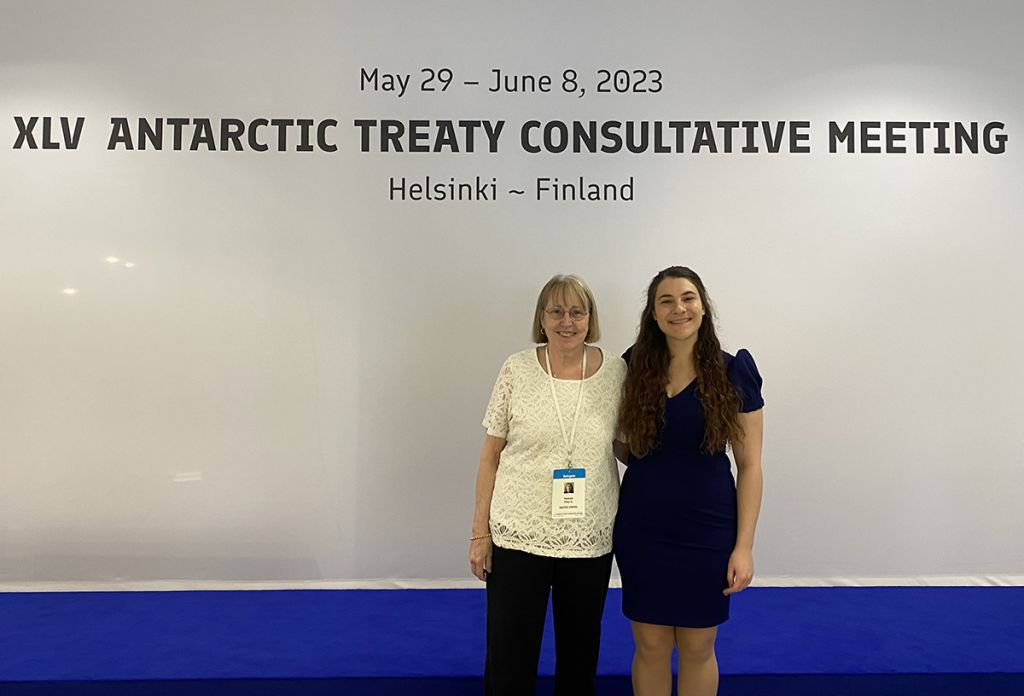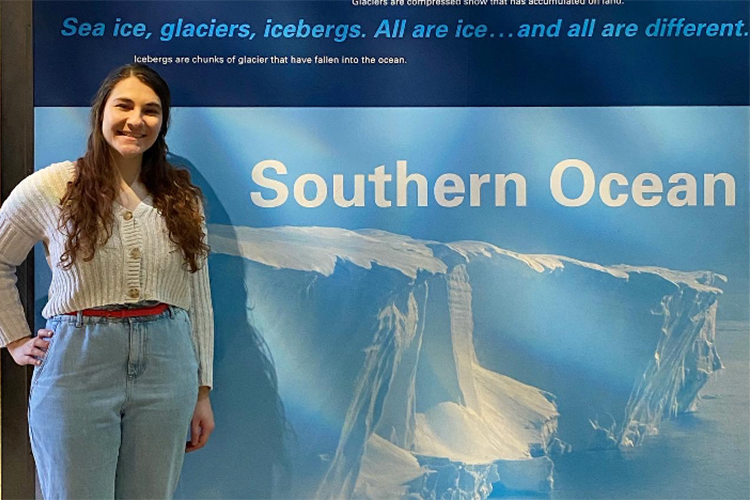A Knauss Fellow’s perspective of the 45th Antarctic Treaty Consultative Meeting
by Gina Selig

As a Knauss Fellow at the National Science Foundation, I served as a U.S. Delegate to the 45th Antarctic Treaty Consultative Meeting (ATCM) as part of the United States Delegation. The meeting, organized by the Ministry for Foreign Affairs of Finland, took place in the beautiful city of Helsinki, Finland, appropriately just as the Arctic Tern was making its way to back to the north after its long migration from Antarctica.
The Antarctic Treaty went into effect in 1961, maintaining Antarctica as a peaceful continent and guaranteeing freedom to conduct scientific research while encouraging international cooperation. It is truly remarkable that at the southern end of our world, there is an entire continent where no war has ever occurred and where protection of the environment is a priority. Today, there are 56 countries that have acceded to the Treaty, representing 80% of the world’s population. Of these, 29 are consultative parties, meaning they have the ability to participate in the consensus-based decision making at the Consultative Meeting due to their demonstrated participation in Antarctic research.
The first meeting of the parties was in Canberra, Australia, in July 1961, and meetings have been held annually since 1994. The meeting provides a regular opportunity for Antarctic Treaty parties to exchange information, consult on matters of shared importance and to formulate, consider, and recommend measures to their governments.
This year, the U.S. delegation included officials from the Department of State, the National Science Foundation, the Environmental Protection Agency, NOAA, and private sector advisors from science and tour industry groups. All had an important role in leading the reinforcement of the existing mining prohibition, developing frameworks for managing Antarctic tourism, and advancing various environmental protection goals in light of the challenges we face in the 21stcentury, such as climate change.

Prior to the meeting, I prepared multiple U.S. policy positions and Information and Working Papers which provide the basis for discussions at the meeting. All Working Papers were presented and require discussion and action while Information Papers provided important information and updates. In my NSF role, I served as a U.S delegate to the meeting of the Committee for Environmental Protection (CEP), which provides advice to the Antarctic Treaty on matters related to management plans for protected areas, environmental monitoring, environmental impact assessments and more. Part of my duties involved supporting my mentors, Dr. Polly Penhale (U.S. Representative to the CEP) and Dr. Andrew Titmus (Alternative U.S Representative to the CEP and 2017 Hawaiʻi Sea Grant Knauss Fellow), taking notes during the meeting sessions, and editing the draft report texts after each session to ensure U.S. statements made on the floor of the meeting were reflected accurately. I was thrilled when two of the Information Papers I wrote concerning the United States education and outreach efforts were regarded highly, especially since there is an initiative to promote the educational value of Antarctic and its environment under the Protocol on Environmental Protection to the Antarctic Treaty. These included “Live from Antarctica,” which highlights the NSF program that connects people virtually from over the globe to learn from scientists about research being conducted in Antarctica, and “Polar STEAM,” a new NSF initiative that combines the principles of STEAM education (Science, Technology, Engineering, Art, and Math) with the study of polar regions and the science conducted there.
As climate change is shaping the future of our planet in ways we are still trying to understand, many of the working and information papers presented during the meeting pertained to climate change, with updates and recommendations from scientific bodies such as the Scientific Committee on Antarctic Research (SCAR). There was a full day dedicated to climate change and the Antarctic which emphasized the necessity of urgent climate action by adopting a declaration that all parties could agree to.
Although agreements could not be met on many issues, it was inspiring and a great honor to be part of international discussions of such a beautiful, remote, and dangerous place where science is the universal language that governments use to advance peace and understanding.

 About the author:
About the author:
Gina Selig is a 2023 John A. Knauss Environmental Policy Fellow working with the Environmental Team at the Office of Polar Programs. Her portfolio includes work on a wide range of polar environmental policy, compliance, and stewardship issues. She also engages in interagency and international policy in the management of marine and terrestrial protected areas and the assessment of environmental impacts of research and operational activities in Antarctica.

